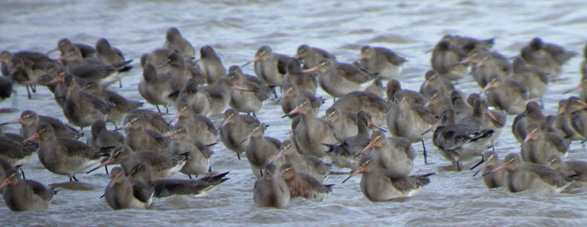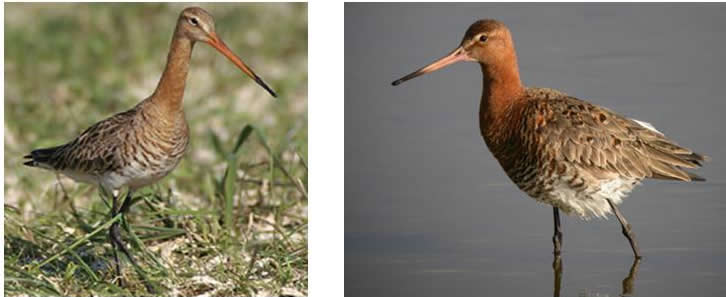
About the Species The Black-tailed Godwit (Limosa limosa) is part of the Scolopacidae family, commonly called waders or shorebirds. The species’ name refers to the large dark bar on the tip of their tail feathers. The long and straight bill and white bar on the wings are also characteristic of the species. Black-tailed Godwits generally breed on meadows, marshes and bogs and winter on coastal wetlands, inland river basins and lagoons. Their prey of choice in winter includes marine benthic invertebrates such as ragworms and bivalves, and earthworms and insects on freshwater grasslands. Black-tailed Godwits can also be found in rice fields feeding mostly on rice seeds. The Black-tailed Godwit species is currently taxonomically divided into three distinct subspecies: limosa, melanuroides and islandica. While the nominate and melanuroides subspecies breed in continental Europe and Asia respectively, the Icelandic Black-tailed Godwit, as the name suggests, breeds almost entirely in Iceland. The nominate subspecies (limosa) breeds mainly in The Netherlands, but extends through central Europe to the west of river Yenisey in Asiatic Russia. During winter this population migrates to southern Europe and sub-Saharan Africa where it mainly forages on rice-fields. The limosa individuals are the largest of the three subspecies and quite distinctive in breeding plumage, with generally paler plumage and less pronounced barring on the feathers of the lower chest and belly. With breeding grounds scattered across Mongolia, northern China, Siberia, and the Russian far-east, the melanuroides population winters mostly around the Indian Ocean and in coastal Australia. This subspecies is the smallest in size of the three subspecies. Icelandic Black-tailed Godwits (islandica) breed primarily in Iceland, with small numbers also breeding in the Faeroe Islands, Shetland Islands (UK) and the Lofoten Islands (Norway). The winter range of this population extends from Britain and Ireland to the Iberian Peninsula and Morocco. Icelandic Godwits are smaller than the nominate subspecies but display an intensely barred belly in breeding plumage and, according to our intensive research, are also the most beautiful! Black-tailed Godwits are the subject of a great deal of current concern, because of the rapid declines in population size in recent years. The species was listed as “Near threatened” on the 2006 red-list compiled by the IUCN (The World Conservation Union). The nominate subspecies has experienced a very severe decline, largely as a consequence of agricultural intensification and wetland drainage on the breeding grounds. The Icelandic population, which is the smallest in number, has increased quite rapidly in recent decades. Little is known about the status of the Asian population. |

